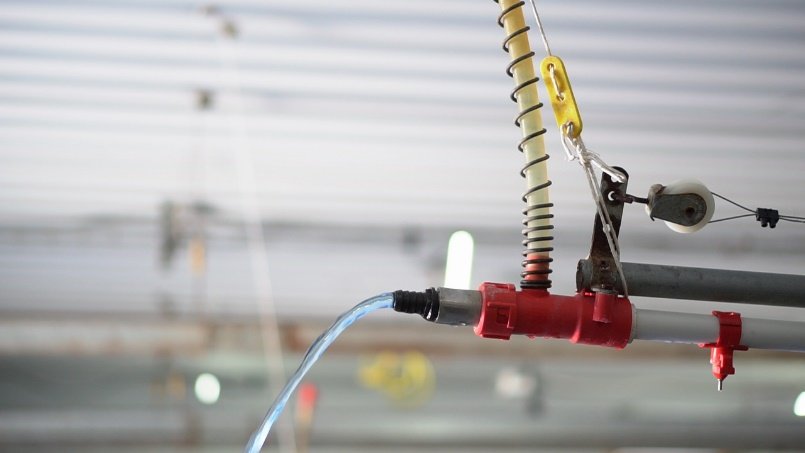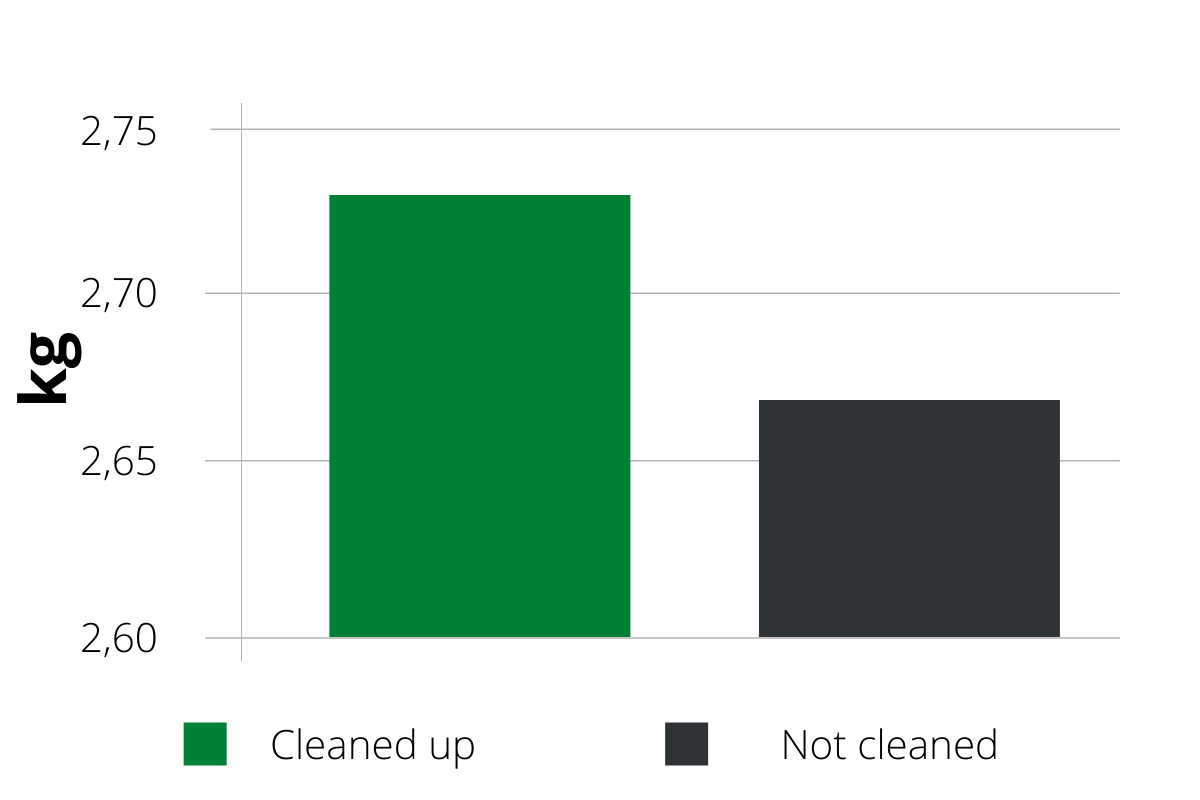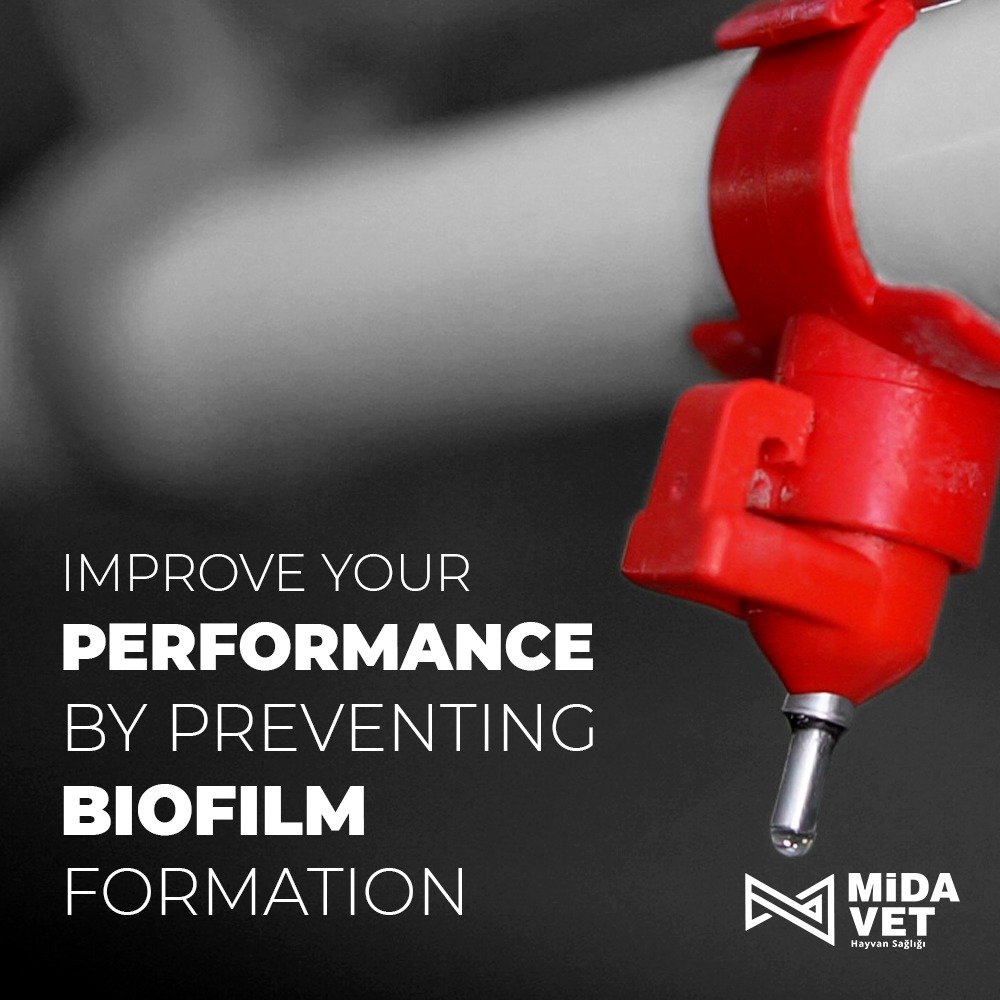The issue of improving the quality of drinking water by reducing biofilm formation is becoming increasingly important in poultry production. Biofilms are complex assemblages of different types of closed microbial cell matrix that cooperate with each other for survival and are tightly bound to hydrated surfaces. Biofilm-forming microorganisms differ from their free-living counterparts in their growth rate, composition, and increased resistance to biocides, which can be attributed to their up- and down-regulation of different genes. Pseudomonas, Enterobacteriaceae (eg E. coli), Clostridia and different cocci are some of the bacteria commonly found in biofilms that cause disease in poultry. Controlling biofilms therefore contributes significantly to improving bird health and minimizing treatments with antibiotics.
The organic substances in the water, contaminations along the waterline and all the substances added to the water for vaccine, medicine, supplement etc. make biofilm formation possible. The local biofilms that are formed disperse along the line over time. This condition is called migration or diffusion.

Stages of biofilm formation
Prevention of biofilm
To prevent such contamination, sanitation of the waterline is recommended after application of medication and additives. To this end;
1. Raise water lines out of reach of animals.
2. Dosage the product you will use into the line.
3. Open the line ends and observe the sanitizer solution coming.

You can easily distinguish that the solution comes from the end of the line with Viroxin pH
4. Close the line ends and wait for the effect time.
5. Finally drain the solution and fill the line with fresh water.
Poultry houses and realities
The risk of biofilm formation is particularly high at the start of any broiler rearing or turkey and pullet rearing batch. This is due to the low flow rate of drinking water and the high temperatures inside the house required for the flock.

Regular cleaning of the drinking system reduces the number of bacteria in the water. Another advantage is the constant availability of palatable water, which positively affects the birds' water consumption and subsequent feed intake.
Clean and dirty
For a detailed analysis of the effects of regular rinsing during rearing, in a study conducted in a 40,000 broiler rearing house (20 meters wide and 94.5 meters long) in Münsterland, Germany, the average body weight gain per bird at day 41 of the regularly cleaned house was determined. It was revealed that 58 g (+2.17%) more.

Results
Water is a living, dynamic environment and an undeniably important component for your production performance. With conscious practices, it is possible to turn this dynamism into a performance element. However, it is necessary to evaluate water not only by considering microbial criteria, but also by ignoring odor, taste and inorganic components that may be harmful to metabolism.
